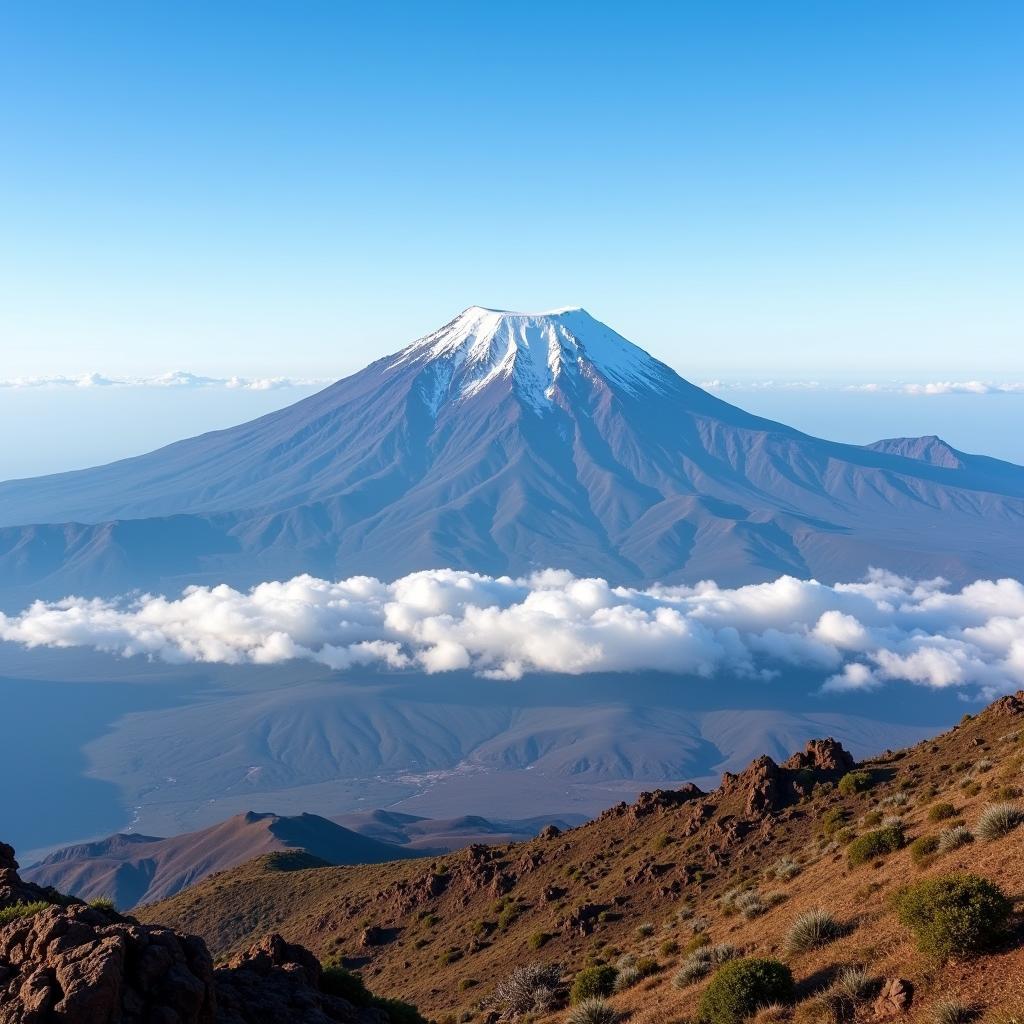The African Bush Elephant Range: A Look at Their Habitat
The African bush elephant (Loxodonta africana) is one of the most iconic animals in the world, known for its immense size and intelligence. Its range spans a vast area across sub-Saharan Africa, making it one of the largest land mammals on the planet. This article delves into the fascinating world of the African bush elephant, exploring its range, habitat, and the factors impacting its survival.
Understanding the African Bush Elephant Range
The African bush elephant’s range covers a significant portion of sub-Saharan Africa, with a diverse array of habitats, including savannas, forests, woodlands, and even deserts. Their preferred habitat is characterized by a mix of grasslands, woodlands, and water sources, offering them access to the food, water, and shelter they need to thrive.
Where do African Bush Elephants Live?
The African bush elephant’s range stretches across a significant part of the continent, encompassing:
- Southern Africa: Botswana, Namibia, South Africa, Zimbabwe, Mozambique, Zambia, Malawi, Angola, and Swaziland.
- Central Africa: Cameroon, Gabon, Central African Republic, Democratic Republic of Congo, Republic of Congo, and Equatorial Guinea.
- Eastern Africa: Kenya, Tanzania, Uganda, Rwanda, Burundi, Ethiopia, Somalia, and Djibouti.
- Western Africa: Senegal, Mauritania, Mali, Burkina Faso, Guinea, Ivory Coast, Ghana, Togo, Benin, Nigeria, and Chad.
Factors Affecting Their Range
The African Bush Elephant Range has been subject to significant changes over the past century, mainly due to factors like:
- Habitat Loss: Deforestation and land conversion for agriculture and urbanization have led to the fragmentation and loss of critical elephant habitats.
- Human-Elephant Conflict: As human populations expand, conflict arises over shared resources, leading to elephant deaths and range restrictions.
- Poaching: Illegal ivory trade continues to threaten elephant populations, driving some species towards extinction.
- Climate Change: Changing climate patterns impact water availability and vegetation growth, impacting elephant survival and distribution.
What is the African Bush Elephant’s Habitat Like?
The African bush elephant prefers open woodlands and savannas, but can also be found in forests and even desert regions. Their habitat needs to offer:
- Abundant Food Sources: Elephants consume a variety of grasses, leaves, fruits, and bark, requiring access to diverse vegetation.
- Water Sources: Water is crucial for survival, particularly during the dry season. Elephants often congregate around waterholes and rivers.
- Shelter: Thick vegetation and dense woodlands provide shelter from the sun, predators, and harsh weather conditions.
Conservation Efforts and the Future of the African Bush Elephant
Conservation efforts are critical to safeguarding the African bush elephant and ensuring its long-term survival. These efforts include:
- Anti-Poaching Initiatives: National parks and conservation organizations work tirelessly to prevent poaching and protect elephants from illegal hunting.
- Habitat Restoration: Reforestation programs and protected areas help restore elephant habitats and minimize human-wildlife conflict.
- Community Engagement: Educating local communities about elephant conservation and promoting sustainable land use practices are essential for long-term success.
The Importance of Protecting the African Bush Elephant
The African bush elephant is an integral part of its ecosystem, playing a vital role in:
- Seed Dispersal: Elephants consume large amounts of fruit and disperse seeds across their range, contributing to vegetation diversity.
- Forest Regeneration: Elephants can help create gaps in forests, allowing sunlight to reach the ground and encourage new plant growth.
- Maintaining Biodiversity: Elephants influence the structure and composition of plant communities, supporting a rich variety of other species.
Conclusion
The African bush elephant, with its vast range and ecological importance, faces numerous threats. Understanding their habitat, conservation efforts, and the factors impacting their survival is crucial for safeguarding this magnificent species. By working together, we can ensure that future generations have the opportunity to marvel at these magnificent creatures roaming the African landscape.
FAQ
Q: Are there different types of African elephants?
A: Yes, there are two species of African elephants: the African bush elephant and the African forest elephant. The African bush elephant is larger and has wider ears than the African forest elephant.
Q: What is the biggest threat to the African bush elephant?
A: Habitat loss and poaching are the biggest threats to African bush elephant populations.
Q: How can I help protect African elephants?
A: You can support conservation organizations working to protect African elephants, educate yourself and others about the threats they face, and avoid purchasing ivory products.
Q: What are the key adaptations that allow African bush elephants to thrive in their habitat?
A: African bush elephants have several key adaptations for thriving in their habitat, including their large size, which allows them to reach high vegetation, their strong trunks for manipulating objects and gathering food, their thick skin for protection, and their ability to travel long distances in search of water and food.
Q: What are some interesting facts about African bush elephants?
A: African bush elephants are known for their intelligence, complex social structure, and the ability to mourn their dead. They are also able to communicate through a variety of sounds and gestures.
Q: What are some other animals that share the same range as the African bush elephant?
A: The African bush elephant shares its range with many other animals, including lions, leopards, giraffes, zebras, and a wide variety of bird species.
Q: Are African bush elephants endangered?
A: The African bush elephant is classified as “Endangered” by the International Union for Conservation of Nature (IUCN).
Q: What are some other articles on the African bush elephant?
A: You may also be interested in: african elephant size, african big elephant, african food chain examples.
Remember: You can contribute to the conservation of these amazing creatures by staying informed, supporting conservation efforts, and making responsible choices.

